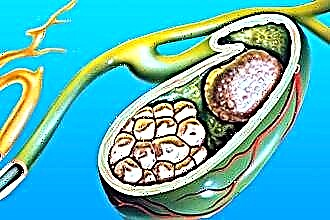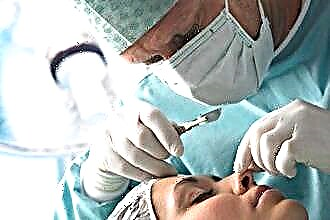How does sauerkraut affect blood pressure and does it affect it at all?
 Sauerkraut contains a large number of components that can directly or indirectly affect blood pressure. So, one of its main components is vegetable fiber. It promotes the retention of cholesterol and other lipids in the intestines, so that they do not enter the bloodstream.
Sauerkraut contains a large number of components that can directly or indirectly affect blood pressure. So, one of its main components is vegetable fiber. It promotes the retention of cholesterol and other lipids in the intestines, so that they do not enter the bloodstream.
In addition, it contains large amounts of vitamin C (or ascorbic acid). This substance not only stimulates the immune system, but also helps to strengthen the vascular wall, which is of great importance in atherosclerosis.
Another component, choline (vitamin B4), plays an active role in lipid metabolism. It lowers the concentration of cholesterol and transport lipoproteins.
Another advantage is the low calorie content of the product - per 100 grams, it contains only about 30 kilocalories. It helps to prevent obesity, diabetes and cardiovascular pathologies.
 However, all these substances cannot directly change blood pressure and are not able to lower it. They only affect the risk factors that lead to the development of hypertension.
However, all these substances cannot directly change blood pressure and are not able to lower it. They only affect the risk factors that lead to the development of hypertension.
At the same time, sauerkraut contains a component in very high concentrations that can directly increase pressure. This is common table salt (NaCl), which works as follows:
- High sodium levels cause increased secretion of the hormone vasopressin;
- Vasopressin (or antidiuretic hormone) leads to vasospasm - which, of course, increases blood pressure;
- Also, this hormone leads to a decrease in the excretion of fluid in the urine. As a result, the volume of circulating blood increases, and, as a result, the pressure rises.
Can I use sauerkraut for hypertensive patients?
In light of the above, we can conclude that eating a large amount of sauerkraut is not recommended for hypertension. This product leads to further progression of pathology, and can also provoke very dangerous hypertensive crises.
Nevertheless, this does not mean a complete ban on the dish. The only question is its quantity and quality. You must adhere to the following recommendations:
- eat sauerkraut with dishes that contain a small amount of salt;
- eat no more than 100 g of salad at a time;
- use the product no more than twice a week;
- try to reduce the amount of salt when preparing salad. Instead, you can add lemon juice (or acid) to the cabbage, which also have good preservative properties;
- it is advisable to use homemade cabbage, since this is the only way you can guarantee control over the amount of salt;
- remember that in case of hypertension, the total daily intake of salt should not exceed 5 grams (a teaspoon without top).
These tips apply only to the first and second degree of hypertension. With the 3rd, as well as in the case of frequent crises, it is better to completely abandon this dish so as not to provoke complications.
Other contraindications for sauerkraut
Attention should also be paid to other pathologies in which the use of this product is contraindicated:
 acute or chronic cholecystitis (gallstone disease);
acute or chronic cholecystitis (gallstone disease);- a stomach or duodenal ulcer;
- pancreatitis;
- renal diseases (glomerulonephritis, urolithiasis);
- gastroesophageal reflux disease;
- hyperacid gastritis.
Sauerkraut recipe without salt
Of course, this is the most ideal option, in which you get all the benefits of this product and almost completely neutralize its negative aspects. The taste of the dish will be slightly different, but this is a perfectly tolerable sacrifice.
It is necessary to prepare cabbage, carrots, water and spices to taste. The preparation is as follows:
- Chop cabbage, carrots and place them in a container;
- Grind them a little so that the vegetables let the juice flow;
- Add seasoning and stir;
- Fill with water (so that it only slightly covers the cabbage);
- Place the container in an even larger container. The juice produced during fermentation will drain into it;
- Cover the jars with a lid, placing a press on top;
- You can eat ready-made salad after three days;
- Store cabbage in a cool, dark place.
Fresh cabbage for hypertension
 In addition to the aforementioned beneficial properties, fresh cabbage also has a diuretic effect. Due to this, it removes water from the body, which leads to a decrease in the volume of circulating blood, and as a result, the pressure drops. Of course, the effect is insignificant, but it still plays a role in the treatment of hypertension.
In addition to the aforementioned beneficial properties, fresh cabbage also has a diuretic effect. Due to this, it removes water from the body, which leads to a decrease in the volume of circulating blood, and as a result, the pressure drops. Of course, the effect is insignificant, but it still plays a role in the treatment of hypertension.
Therefore, a fresh vegetable can be consumed for hypertension without any restrictions. There are recommendations to drink cabbage juice, but it does not contain fiber, so it is better to eat cabbage in its original form, with minimal cooking.
Conclusions
Sauerkraut is relatively contraindicated for hypertension. Due to the high concentration of sodium chloride, it leads to water retention in the body, and, as a result, to an increase in blood pressure. Nevertheless, it can be consumed in limited quantities, since the product has a positive effect on fat metabolism, the violation of which is one of the risk factors for high blood pressure.
At the same time, the fresh vegetable is used to combat obesity, and also, due to its diuretic effect, has a slight hypotensive effect and therefore is allowed in case of hypertension.

 acute or chronic cholecystitis (gallstone disease);
acute or chronic cholecystitis (gallstone disease);

